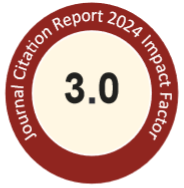Abstract
A simple, rapid, and accurate high-performance liquid chromatographic (HPLC) method for quantitation of cationic disinfectants was developed using a silica gel column with aqueous mobile phases. The disinfectants are classified into two categories, both of which can be separated simultaneously on a μ-Porasil silica gel column (3.9 × 300 mm). An aqueous mobile phase (1), composed of CH 3CN: H 2O (70/30, v/v), triethylamine (0.04%), and acetic acid (0.1%), with UV detection at 262 nm, provides quantitation of benzalkonium chloride (1) and chlorhexidine gluconate (2) in cosmetics. The identification of two cationic disinfectants in each cosmetic sample can be achieved in 9 min with dextromethorphan HBr as an internal standard. With the mobile phase (2) of CH 3CN: H 2O (90/10, v/v), triethylamine (0.04%), and acetic acid (0.1%), setting the UV detection at 269 nm can identify the constituents of domiphen bromide (3), benzethonium chloride (4), cetylpyridium chloride (5), and dequalinium chloride (6) in pharmaceuticals. When propantheline bromide was used as an internal standard, the quantitation of four cationic disinfectants in each pharmaceutical sample could be completed within 16 min. The method provides a reliable, prompt way to analyze cationic disinfectants in both household cosmetics and pharmaceutical preparations available on the market. Regression equations of six standard curves revealed the related coefficients, r 2, of between 0.9997 and 1.0000. The HPLC method can be carried out with a high level of precision and accuracy. From the intra- and interday tests, the coefficients of variation (CV) were between 0.13% and 2.04% for cosmetics, and 0.08% and 0.87% for pharmaceuticals. The recoveries were found to be 96.75%-99.95% for cosmetics with CV of 0.45%-2.88%, and 99.17%-99.92% for pharmaceuticals with CV of 0.21%-0.47%.
Recommended Citation
Chen, F.-A.; Wu, K.-S.; Huang, M.-C.; Chen, C.-Y.; and Wu, A.-B.
(2001)
"Simultaneous quantitation of cationic disinfectants by high-performance liquid chromatography on a silica gel column using aqueous eluents,"
Journal of Food and Drug Analysis: Vol. 9
:
Iss.
4
, Article 4.
Available at: https://doi.org/10.38212/2224-6614.2780

